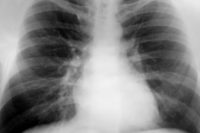 What better time than during the American Cancer Society’s annual Great American Smokeout, to highlight the benefit of comprehensive smoke-free workplaces on the health of workers. Furnishing a smoke-free work environment has been shown to both reduce exposure to environmental tobacco smoke (ETS) among non-smokers, and also to decrease smoking among employees. In Massachusetts, recent surveillance findings suggest that one approach to reaching that goal – comprehensive state laws mandating smoke-free workplaces – had a measurable positive impact.
What better time than during the American Cancer Society’s annual Great American Smokeout, to highlight the benefit of comprehensive smoke-free workplaces on the health of workers. Furnishing a smoke-free work environment has been shown to both reduce exposure to environmental tobacco smoke (ETS) among non-smokers, and also to decrease smoking among employees. In Massachusetts, recent surveillance findings suggest that one approach to reaching that goal – comprehensive state laws mandating smoke-free workplaces – had a measurable positive impact.
The U.S. Surgeon General reports that there is no safe level of exposure to ETS, also known as secondhand smoke (USDHHS 2006). Workers can be exposed to ETS in their workplaces if co-workers or members of the public are permitted to smoke. ETS causes lung cancer and heart disease, and is also linked to respiratory diseases. Not only does ETS worsen asthma but it also increases the likelihood of developing asthma.
In 2004, Massachusetts became the third state behind Delaware and New York to pass a comprehensive law, banning smoking in bars, restaurants and non-hospitality workplaces. The Massachusetts Smoke-Free Workplace Law (M.G.L. Ch. 270, § 22) requires all enclosed workplaces with one or more employees to be smoke-free.
We recently presented findings from the Behavioral Risk Factor Surveillance System demonstrating that since the 2004 ban in Massachusetts, the prevalence of ETS exposure at work among non-smokers declined from 8% in 2003 (the year before the ban was passed) to 5.4% in 2010. At the same time, smoking among workers declined from 18.5% in 2004 to 12.7% in 2010. And while smoking prevalence had been declining before the law was passed, the drop was steeper after it went into effect. These findings suggest that comprehensive smoking bans work, but our results also indicate that there is more work to be done.
In 2010, prevalence of exposure to ETS at work among non-smokers ranged from 3% to 37% depending on occupation group. The three occupation groups with significantly higher than average prevalence were:
Click here to read the rest of the article.



